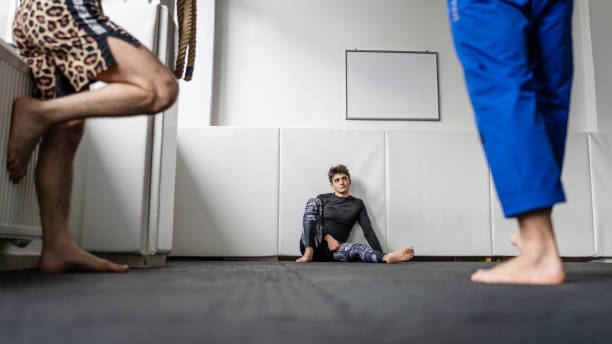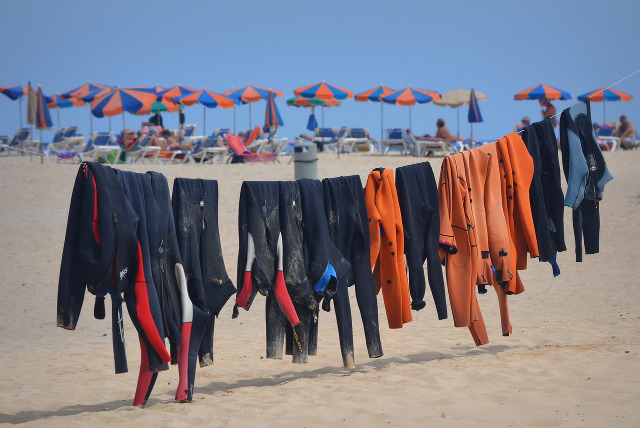Introduction
In recent times, the traditional kimono, or gi, has seen a decline in popularity within the grappling community.
However, it's crucial to recognize the significant role the gi plays as a teaching tool in our sport.
I will bring some arguments as to why I believe that your grappling journey should include plenty training wearing pyjamas.
Of course, if you are a professional athlete competing in ADCC you should spent most of your time training without a gi, preferably with body lotion. The same as you would add all the lapel stuff for a black belt IBJJF competition.
The no-gi spectrum
Before delving into the benefits of gi training, let's briefly define what no-gi entails.
The options for no-gi attire are diverse, ranging from shorts, rashguards, and wrestling singlets to various accessories like knee pads and wrestling shoes.
Even within this seemingly streamlined wardrobe, decisions about shaving limbs and using body lotion play a role.
The variety emphasizes that even in a no-gi setting, numerous clothing decisions must be considered.
Hopefully the following arguments will help you in your grappling clothing decisions.

Arguments in favor of pyjamas training
- Under the same ruleset, training with a gi is more difficult than training without a gi. You basically have to know the same moves plus all the additional knowledge that is needed to deal with the gi. That's why you often see gi champions do well in no-gi competition, but not the other way around. As rulesets starts deviating more, we might see this less prominent but I strongly believe it will always be there. Just the same way as good wrestlers will always have an edge competing in either gi or no-gi.
- No-gi is more slippery than gi, and because of this it's less safe, except maybe for your fingers. The mats get wet very fast and there are no cotton jackets or pants to help dry up things. It will go faster and sliding accidents will happen.
- Kimonos are not as sexy as underwear. I believe we should not underestimate the success of no-gi, because our social evolutional sexual behavior. No-gi prefers athletic body types. Pyjamas hide the body, which actually helps people with some of their insecurities. I would like to nuance that as a teacher I often remove my jacket as it also might hide the gripping details of certain techniques.
- Training with a gi allows to train within a no-gi ruleset, the other way around is obviously not possible. It's all about communication, you need to talk to your training partners. Nothing wrong with rolling and agreeing before to not grab any of the clothing. Just the same as you might decide to roll without leglocks (cause you have old and weak knees) or rolling wihtout chokes (as you recently fainted and understand it's not safe to go unconsious multiple times in a short time period)
Additional differences
- I would say that for no-gi it's important to have a strong grip, but it's hard to train this while rolling as most grips will be easily prevented. Training with a gi makes gripping easier and therefor you have more opporunities to improve your grip strength.
- For hip movement development I would argue the same. Often when trying to choke your both hands are stuck in the lapels. This gives you no option to base with your hands, and therefor your hips need to take over your core stability.
- No-gi for sure teaches you a more offensive game, which is very important. However when starting out it makes more sense to first develop your defensive skills which will create more offensive opportunities or at least reduce the fear of going from an offensive into a defensive cycle. Submissions are much easier with a gi, except for naked chokes.
- The belt provides for an indication of skill, which depending on the culture of the gym might help or reduce the overall game improvements. Some schools believe this is important and therefor introduced rash guards with belt colors.
- Athletic students will have it much easier in no-gi training, adding the kimono will add friction and level out some of the physical attributes. Slowing down the rolling also helps in thinking about techniques.
It's also good to be reminded that these people spent 10+ years training in the gi: Eddie Bravo, Khabib Nurmagomedov, Lachlan Giles, Craig Jones, Mikey Musumeci, Gordon Ryan, Marcello Garcia, Roger Gracie, ... maybe Nicky Rod is the only one that never trained in pyjamas... maybe.
In the end I prefer people to show up for class, no matter what they are wearing. I would recommend training in a gi with the focus on a no-gi game, and especially paying attention to communicating with your training partners.

Comparison
| GI |
NO-GI |
| More difficult |
Less difficult |
| More safe |
Less safe |
| Less slipery |
More slipery |
| Less sexy |
More sexy |
| More healthy fabrics |
Less healthy fabrics |
| More laundry |
Less laundry |
| Higher initial clothing cost |
Lower initial clothing cost |
| More self-defense realistic |
Less self-defense realistic |
| Improves grip strength |
Makes gripping hard |
| Easier hip movement development |
Less easy hip movement development |
| More difficult to escape |
Easier to escape |
| Easier to attack |
More difficult to attack |
| Belt provides skill indication |
Lack of skill indication |
| Less athletic needs |
Easier for athletic people |
| Slower |
Faster |
| Prefers lapel chokes |
Prefers naked chokes |
Should I wear a rash guard under my gi?
I don't know, I guess if you feel like. So far I haven't found any proof that rash guards actually help preventing rash more than a cotton kimono. But seen that there is a lot of plastic in them, there might be some truth in it. In any case, probably nicer for your training partners?